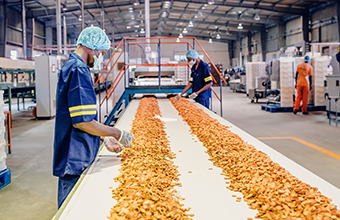This two-part series on a healthy office atmosphere covers three ways in which your company can positively impact your employees at work. In part two of two, this article delves into the impact personal interactions have on innovation, performance, and talent development. Part one of two covered the impact standing desks have on employee activity levels and how bringing plants into your office affects psychological engagement and memory retention. If your company’s goal is to create an environment where your employees are more productive, then consider these simple changes.
Install a free beverage station
Free beverages are a staple in many offices with good reason. They are a positive incentive for your employees and are a relatively small expense for a potentially big return. A study conducted by Sociometric Solutions and published by Harvard Business Review set out to identify the value of workspaces, not just their costs, and found that providing a beverage hub where people gather to be hugely important.
Sociometric badges were deployed to track roughly 50 executives responsible for almost $1 billion in annual sales at a pharmaceutical company. With a goal to increase sales, results showed a strong correlation between interactions with coworkers across teams and sales growth. This data reveals that personal interactions have a significant impact on innovation and performance.
So, the pharmaceutical company reconfigured its space in a way that would encourage employees from various departments to interact more with each other. By replacing several small coffee stations with a few large, free beverage hubs, the company’s sales grew by 20%, or $200 million, easily justifying the investment in providing free beverages.
Some of the best insights, decisions, and creative ideas don’t come while sitting in front of your computer monitor. Rather this study shows that a workplace designed to foster collaboration will lead to the type of innovation that comes out of interaction with one another.
Create a space that helps develop your talent
In her book 5 Critical Conversations to Talent Development, Julie Haddock-Millar explains that
A space designed to encourage such employee collisions, or unplanned encounters between your workforce, improves performance.
When you recognize a workspace’s effect on talent development, then you can engineer the workplace to improve it. Look at your space as a strategic tool for growth and re-engineer it for interactions over efficiency. Consider the digital tools employees use to get work done as an example. If you marry employee communication patterns with your physical space, you increase the likelihood of exchanges that positively impact worker performance.
A dramatic adjustment in the way we plan space requires a transformation of HR, IT, and facilities management away from support functions and towards facilitators. To make such a transition possible, encourage those departments to use the office as a communication tool. A perfect example would be to incorporate an indoor garden or green space to make working in that area feel inviting and empower transdisciplinary collaboration.
However, be mindful that tailoring your workplace for communication and cross-team collaboration as a talent development tool has its limits. There is a difference between multipurpose areas and an open office layout. As recently noted in the Wall Street Journal, an open office floor plan doesn’t always live up to the hype and most knowledge workers simply need a quiet place to get away and think sometimes.
Finding the right balance
Striking the right balance between personal interactions, talent development, and quiet or independent work in your office is the key to an effective workplace environment. Working with a workplace strategy expert ensures such an important task is managed and planned effectively. A strong multidimensional team should help you:
- Make informed decisions about labor, location, logistics, and real estate
- Align your company's operational plan with a forward-looking real estate plan
- Bring together an integrated team of senior level professionals to implement change
- Provide a comprehensive approach to align collaboration and talent development with your workplace environment



